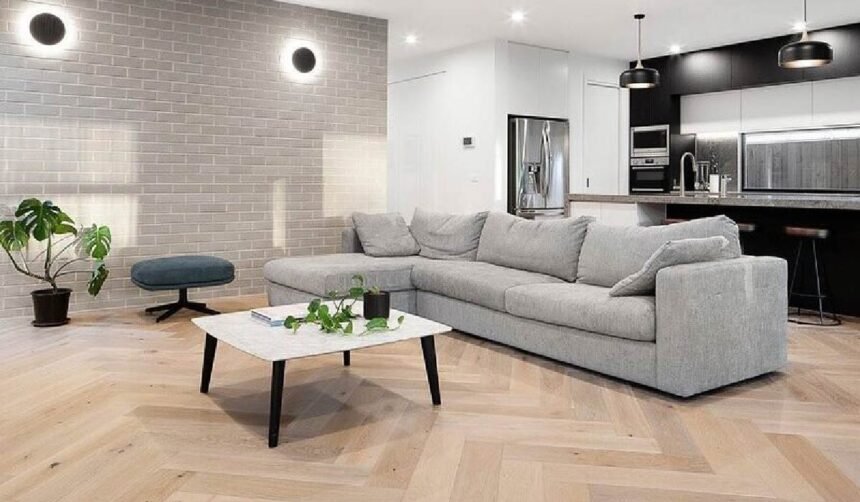Few design elements bridge past and present as effortlessly as herringbone flooring. Once a hallmark of grand European estates and Victorian townhouses, its intricate zigzag pattern has found a new identity in modern interiors. The renewed appreciation for craftsmanship and texture has made herringbone one of the most versatile flooring choices for contemporary homes, adding visual rhythm and a touch of heritage to even the sleekest spaces.
The Enduring Appeal of Herringbone
Herringbone’s popularity isn’t new. Its roots trace back to the Roman Empire, where the pattern was used in road construction for stability. Centuries later, it became synonymous with European elegance, often seen in Parisian apartments and stately homes. Today, its geometric precision and tactile warmth offer exactly what many modern interiors crave: detail without fuss.
In contemporary design, herringbone flooring introduces movement and interest without the need for excessive ornamentation. Its pattern plays beautifully with light, subtly changing tone throughout the day; a feature that keeps minimalist spaces from feeling flat.
Choosing the Right Material and Finish
The beauty of herringbone lies in its adaptability. While traditional versions used oak or walnut, today’s homeowners can choose from a wide palette of materials and tones. Light woods such as ash or white oak create an airy, Scandinavian feel; perfect for open-plan layouts and rooms flooded with natural light. Deeper hues like smoked oak or walnut, on the other hand, lend depth and sophistication to neutral schemes.
For a more industrial or modern edge, engineered wood and luxury vinyl parquet designs mimic natural grains while offering durability and ease of maintenance. Matte finishes tend to feel more contemporary than glossy ones, especially when paired with understated wall colours and simple, angular furniture.
Pairing Heritage Patterns with Modern Design
Blending old and new successfully comes down to contrast and balance. When herringbone flooring serves as a statement feature, the rest of the décor should feel restrained and cohesive. Think clean-lined furniture, sculptural lighting, and a neutral palette accented by texture rather than pattern.
For example, pale herringbone floors look stunning alongside soft grey walls, linen upholstery, and brushed metal accents. In darker schemes, black-framed artwork, smoked glass, and plush textiles help create a moody, modern aesthetic that still feels warm. Rugs can define spaces within open layouts while allowing glimpses of the intricate pattern beneath; an elegant reminder of the floor’s craftsmanship.
Subtle Coordination Across the Home
Herringbone works beautifully in both period properties and new builds, but continuity is key. Extending the same pattern across adjoining rooms creates a seamless flow, particularly when paired with consistent wall tones and complementary materials such as marble, terrazzo, or concrete.
In kitchens and dining areas, the flooring’s geometry contrasts wonderfully with the straight lines of cabinetry and countertops. For living rooms or bedrooms, layering in natural textures, wool throws, rattan accents, and cotton cushions, keeps the look relaxed and inviting. Even small spaces, such as hallways or bathrooms, benefit from a herringbone layout’s ability to draw the eye and elongate the room.
Adding Personality Through Colour and Texture
While natural wood remains the most popular choice, painted or stained herringbone floors can transform a space entirely. Soft greys or whitewashed finishes evoke a coastal calm, whereas dark espresso tones bring instant drama. For a bolder take, mid-century inspired colours like warm honey or deep tobacco brown can complement brass fixtures and jewel-toned fabrics beautifully.
The key is to treat the flooring as part of a wider composition. Its texture can be echoed through woven fabrics, timber furniture, or even ribbed ceramics, creating a sense of harmony throughout the room.
Is It Worth the Investment?
Herringbone flooring isn’t just a passing trend; it’s a design choice that holds its value. Its craftsmanship appeals to those who appreciate heritage, while its geometric precision feels entirely relevant to modern architecture. Though installation can be more labour-intensive than standard plank layouts, the long-term aesthetic and resale value often justify the investment.
It’s a timeless foundation that elevates everything around it, from minimalist interiors to eclectic, design-led spaces. With the right styling, herringbone flooring becomes more than just a surface underfoot; it’s a conversation between past and present, creating a home that feels both grounded and forward-looking.







